Is Green Energy the Solution to Energy Access in Remote Areas?
In today's world, where energy is the lifeblood of modern society, the question of energy access in remote areas is more pressing than ever. Imagine living in a place where the sun shines brightly, but you still rely on expensive and polluting fossil fuels for power. It’s not just inconvenient; it stifles growth, education, and health. This is where green energy comes into play, offering a beacon of hope for underserved communities. By harnessing renewable resources like solar, wind, and biomass, we can not only provide energy but also empower these communities to thrive. But is green energy truly the solution? Let's dive deeper into the myriad possibilities it presents.
Green energy solutions are not just theoretical concepts; they are practical, real-world applications that can transform lives. Think about solar panels soaking up the sun's rays to power homes, or wind turbines spinning gracefully to generate electricity. These technologies are becoming increasingly accessible and affordable, making them viable options for remote areas that often lack traditional energy infrastructure. However, it’s essential to recognize that while the potential is enormous, there are challenges that must be addressed to make these solutions a reality.
In the following sections, we will explore various green energy technologies, their benefits, the challenges they face, and real-world applications that illustrate their effectiveness. From community solar projects that unite neighbors in a common goal to innovative financing solutions that overcome economic barriers, the path to energy access through green energy is filled with promise and potential. So, buckle up as we embark on this enlightening journey to uncover whether green energy is indeed the key to unlocking energy access in remote areas!
Energy access is not just a luxury; it is a fundamental necessity for economic development, education, and health, especially in remote areas. Without reliable energy, local businesses struggle to operate, children find it difficult to study after sunset, and healthcare facilities cannot provide essential services. Understanding the significance of energy access helps highlight the urgent need for sustainable solutions that can bridge the energy gap faced by these communities. It’s like trying to build a house without a solid foundation; without energy, the potential for growth and improvement crumbles.
Various green energy technologies are available, each offering unique advantages for remote areas. Let’s take a closer look at some of the most promising options:
Solar energy stands out as a leading green solution for remote areas, primarily due to its scalability and decreasing costs. With solar panels becoming more affordable and efficient, they can provide reliable power for homes and businesses in off-grid locations. Imagine a family in a remote village finally having access to electricity, allowing them to power lights, charge devices, and even run small appliances. It's a game-changer!
One innovative approach to solar energy is through community solar initiatives. These projects allow multiple users to share the benefits of a single solar installation, fostering collaboration and significantly improving energy access for remote communities. Picture a group of neighbors coming together to invest in a solar farm that powers their homes—it's not just about energy; it’s about building a stronger community.
Despite its numerous benefits, solar energy faces challenges in remote areas, including high initial costs and the need for storage solutions. The upfront investment can be daunting for communities with limited financial resources. However, there are potential strategies to overcome these hurdles, such as government incentives, grants, and innovative financing models that can help spread the costs over time.
Wind energy also presents a viable option for remote energy access. With the right conditions, wind turbines can generate significant amounts of power. However, site selection is crucial, as not every location is suitable for wind energy. Integrating wind energy into existing energy systems can help create a more resilient energy infrastructure.
Green energy solutions offer a plethora of benefits that can transform remote communities. Here are just a few:
- Reduced Carbon Emissions: Transitioning to renewable energy helps combat climate change.
- Energy Independence: Communities can generate their own power, reducing reliance on external sources.
- Job Creation: The green energy sector creates jobs, boosting local economies.
These advantages can significantly impact remote communities, providing them with the tools they need to thrive and grow.
While green energy offers promising solutions, various challenges hinder its implementation in remote areas. These include financing, infrastructure, and local acceptance. Understanding these obstacles is crucial for developing strategies that facilitate energy access.
Securing funding for green energy initiatives can be particularly challenging in remote areas. However, innovative financing models and partnerships can help overcome these financial barriers. For instance, crowdfunding campaigns or public-private partnerships can mobilize the necessary resources to kickstart projects.
The lack of infrastructure in remote areas poses a significant challenge for green energy implementation. Necessary improvements, such as roads and communication systems, must be addressed to support renewable energy projects effectively.
Examining successful green energy projects in remote areas provides valuable insights into best practices. For example, solar microgrids have successfully provided energy access to rural communities worldwide, demonstrating the effectiveness of renewable energy solutions. Similarly, wind farms established in isolated regions showcase the potential for renewable energy to meet local energy needs.
The future of green energy in remote areas looks promising, with advancements in technology and increasing support from governments and organizations. Innovations in energy storage are crucial for the reliability of green energy, allowing communities to store excess energy for use during low production periods. Supportive policies and regulations will also play a vital role in promoting green energy adoption, creating favorable environments for renewable energy projects.
Q: What are the main types of green energy?
A: The main types include solar, wind, biomass, and hydroelectric energy.
Q: How can remote communities finance green energy projects?
A: They can explore innovative financing models like crowdfunding, grants, and public-private partnerships.
Q: What are the environmental benefits of green energy?
A: Green energy reduces reliance on fossil fuels, leading to lower greenhouse gas emissions and a smaller carbon footprint.

The Importance of Energy Access
Energy access is not just a luxury; it is a fundamental necessity for economic development, education, and health, especially in remote areas. Imagine living in a place where the sun sets, and with it, your chances of studying, working, or even keeping your food fresh vanish. The lack of reliable energy sources can stifle growth and perpetuate poverty in these communities. By enhancing energy access, we can unlock a world of opportunities that lead to sustainable development.
When we talk about the significance of energy access, we must consider its multifaceted impact. For instance, in regions where electricity is scarce, educational institutions struggle to provide a conducive learning environment. Students often rely on kerosene lamps for studying at night, which are not only inefficient but also hazardous to their health. On the other hand, with reliable energy access, schools can operate after dark, allowing students to engage in homework and extracurricular activities, ultimately improving educational outcomes.
Moreover, energy access is crucial for healthcare. In remote areas, hospitals and clinics often lack the power to operate essential medical equipment or store vaccines properly. The absence of electricity can lead to dire consequences, including higher mortality rates. By providing reliable energy solutions, we can ensure that healthcare facilities operate effectively, thereby saving lives and improving community health.
Additionally, energy access fuels economic development. Small businesses in remote areas often struggle to thrive due to the lack of electricity. Without power, they cannot operate machinery, keep their products fresh, or even attract customers after sunset. However, when these communities gain access to energy, the potential for entrepreneurship expands significantly. Local businesses can flourish, creating jobs and stimulating the economy.
In summary, the importance of energy access cannot be overstated. It is the backbone of progress in remote areas, influencing education, health, and economic development. As we explore green energy solutions, it becomes increasingly clear that bridging the energy gap is not just about providing power; it’s about empowering communities to thrive.
To further emphasize the importance of energy access, here’s a quick overview:
| Aspect | Impact of Energy Access |
|---|---|
| Education | Improves learning opportunities and outcomes |
| Healthcare | Enhances medical services and saves lives |
| Economic Development | Stimulates local businesses and job creation |

Types of Green Energy Solutions
When it comes to enhancing energy access in remote areas, green energy solutions stand out as beacons of hope. These technologies not only promise sustainable energy but also pave the way for economic growth and environmental preservation. Among the most popular green energy options are solar energy, wind energy, and biomass energy. Each of these solutions has unique advantages and can be tailored to meet the specific needs of underserved communities.
Solar energy is perhaps the most recognized form of renewable energy, especially in remote areas. With the sun shining brightly in many regions, solar panels can be deployed to harness this abundant resource. They are scalable, meaning they can be installed on rooftops or in larger arrays to power entire communities. The decreasing cost of solar technology makes it an increasingly viable option for those who previously relied on costly fossil fuels. Imagine a village where each home is equipped with solar panels, allowing families to power their lights, cook meals, and even run small businesses—all thanks to the sun!
Next, we have wind energy. Wind turbines can be an excellent fit for remote areas, particularly those with consistent wind patterns. These towering structures convert wind into electricity, providing a clean and sustainable energy source. The key to successful wind energy implementation lies in site selection. Identifying locations with optimal wind conditions is crucial for maximizing energy output. Furthermore, integrating wind energy into existing energy systems can help stabilize power supply, ensuring that communities have access to reliable electricity.
Another noteworthy solution is biomass energy. This involves using organic materials—such as agricultural waste, wood, and even animal dung—to generate energy. Biomass can be particularly beneficial in rural areas where agricultural activities are prevalent. Not only does this method utilize waste that would otherwise contribute to pollution, but it also creates a circular economy that supports local farmers and reduces energy costs. By converting waste into energy, communities can achieve energy independence while managing their waste effectively.
In summary, the variety of green energy solutions available today provides numerous options for remote areas. Each technology has its strengths and can be implemented in ways that cater to the specific circumstances of different communities. As we explore these options further, it’s essential to consider not only the benefits but also the challenges associated with each type of green energy.
- What is green energy? Green energy refers to energy that is generated from renewable, naturally replenished resources, such as solar, wind, and biomass.
- How does solar energy work? Solar energy works by converting sunlight into electricity using solar panels, which contain photovoltaic cells that capture and convert light energy.
- What are the benefits of using wind energy? Wind energy is clean, reduces reliance on fossil fuels, and can provide a sustainable source of electricity for remote areas.
- Can biomass energy be produced in remote areas? Yes, biomass energy can be produced in remote areas by utilizing locally available organic materials, making it a practical solution for energy access.

Solar Energy
When we talk about green energy, solar energy shines the brightest, especially in remote areas. Why? Because it’s not only abundant but also incredibly versatile. Imagine harnessing the sun's rays to power your home, charge your devices, or even run a small business—this is the reality that solar energy offers to off-grid communities. With the rapid advancements in technology and a significant drop in costs, solar panels have become an increasingly viable option for those living in isolated regions. They can be installed on rooftops, integrated into community centers, or set up as standalone systems, providing a range of solutions tailored to specific needs.
One of the most exciting aspects of solar energy is its scalability. Whether a community requires a small solar setup for a single household or a larger array to power several homes, solar technology can adapt accordingly. This flexibility makes it an attractive option for remote areas where traditional energy sources may be unreliable or completely absent. Moreover, the installation of solar energy systems often leads to job creation in local areas, as skilled workers are needed for installation and maintenance.
However, it’s essential to understand that while solar energy is a fantastic solution, it does come with its own set of challenges. The initial investment can be high, which might deter some communities from pursuing solar energy. Additionally, the effectiveness of solar panels can vary based on geographic location, weather conditions, and seasonal changes. This is where energy storage solutions come into play. By incorporating batteries or other storage technologies, communities can ensure a consistent power supply even when the sun isn’t shining.
One innovative approach to overcoming some of these challenges is the concept of community solar projects. These initiatives allow multiple users to share the benefits of a single solar installation. Think of it as a community garden, but instead of growing vegetables, you’re growing energy! This model not only democratizes access to solar power but also fosters collaboration among community members, making it a win-win situation. By pooling resources, communities can reduce the financial burden of solar installations and collectively reap the benefits of renewable energy.
Despite its many advantages, implementing solar energy solutions in remote areas is not without obstacles. High initial costs can be a significant barrier, especially for communities with limited financial resources. Furthermore, the need for reliable energy storage systems can complicate the implementation process. However, innovative financing solutions, such as public-private partnerships and grants, can help mitigate these challenges. Community engagement and education are also crucial in ensuring that residents understand the benefits of solar energy and are willing to invest in it. By addressing these hurdles head-on, we can unlock the full potential of solar energy in transforming remote communities.
- What is solar energy? Solar energy is the energy harnessed from the sun's rays using solar panels, which convert sunlight into electricity.
- How can solar energy benefit remote areas? Solar energy can provide a reliable and sustainable power source, reduce dependence on fossil fuels, and create local jobs.
- What are the challenges of using solar energy in remote areas? The main challenges include high initial costs, the need for energy storage solutions, and varying effectiveness based on location and weather.
- What are community solar projects? Community solar projects allow multiple users to share the benefits of a single solar installation, making solar energy more accessible and affordable.

Community Solar Projects
Community solar projects represent a groundbreaking approach to harnessing solar energy, particularly in remote areas where individual installations may not be feasible. These initiatives allow multiple users—such as households, businesses, and even local governments—to share the benefits of a single solar installation. Imagine a community coming together, pooling resources, and collectively investing in a solar farm that provides clean, renewable energy to everyone involved. This model not only democratizes energy access but also fosters a sense of collaboration and shared responsibility among community members.
One of the most significant advantages of community solar projects is their ability to lower the financial barrier to entry for renewable energy. Instead of requiring each household to invest in their own solar panels, community solar allows participants to buy or lease a portion of a larger solar array. This can drastically reduce the upfront costs and make solar energy accessible to those who might not have the means to invest in their own systems. For example, a community solar project might consist of a solar farm with a capacity of 100 kW, where local residents can subscribe to receive credits on their electricity bills proportional to their share of the energy produced.
Furthermore, community solar projects can be tailored to meet the specific needs of the community. For instance, if a remote area has a high number of low-income families, the project can be designed to offer subsidized rates or even free access to solar energy. This targeted approach not only enhances energy access but also contributes to social equity, ensuring that everyone benefits from the transition to renewable energy.
However, implementing community solar projects is not without its challenges. Factors such as land availability, local regulations, and community engagement must be carefully navigated to ensure success. For instance, community members need to be informed and involved in the decision-making process to foster a sense of ownership and commitment to the project. Additionally, local governments may need to create supportive policies that encourage the development of such initiatives. This collaboration between community members and local authorities is crucial for overcoming obstacles and ensuring the long-term sustainability of community solar projects.
In summary, community solar projects are a promising solution for enhancing energy access in remote areas. By pooling resources and fostering collaboration, these initiatives not only provide clean energy but also strengthen community ties and promote social equity. As more communities recognize the benefits of working together to harness renewable energy, we can expect to see a rise in such projects, ultimately transforming the energy landscape in underserved regions.
- What is a community solar project? A community solar project is a solar energy installation that allows multiple participants to share the benefits of the energy produced, making solar power more accessible and affordable.
- How do community solar projects work? Participants can buy or lease a portion of the solar installation, receiving credits on their electricity bills based on their share of the energy produced.
- What are the benefits of community solar? Community solar projects lower financial barriers, promote social equity, and foster collaboration within the community while providing access to renewable energy.
- What challenges do community solar projects face? Challenges include land availability, local regulations, and the need for community engagement to ensure the project's success.

Challenges of Solar Implementation
While solar energy shines brightly as a potential solution for energy access in remote areas, it does come with its own set of challenges. One of the most significant hurdles is the high initial costs associated with purchasing and installing solar panels. Although prices have been steadily decreasing, the upfront investment can still be a barrier for many communities that are already economically disadvantaged. This initial cost can deter local governments or organizations from pursuing solar projects, leaving many without the benefits of renewable energy.
Moreover, the need for energy storage solutions adds another layer of complexity. Solar energy is inherently intermittent; it’s only generated when the sun is shining. For communities that rely solely on solar power, having a reliable energy supply during nighttime or cloudy days is crucial. This necessitates the integration of battery storage systems, which can be expensive and require additional infrastructure to support them. The challenge is not just in the cost but also in the technical know-how required to maintain these systems.
Another challenge lies in the lack of technical expertise in remote areas. Many local communities may not have the necessary skills to install, operate, and maintain solar systems effectively. This gap in knowledge can lead to inefficiencies and even failure of solar projects, which can be disheartening for communities that invest time and resources into these initiatives. Training programs and partnerships with technical experts can help bridge this gap, but they require additional funding and planning.
Furthermore, there is the issue of local acceptance. In some cases, communities may be skeptical of new technologies, especially if they have had negative experiences with previous projects. Building trust and demonstrating the tangible benefits of solar energy is essential for gaining community support. Engaging local stakeholders in the planning and implementation process can foster a sense of ownership and encourage acceptance of solar initiatives.
Lastly, the regulatory environment can pose challenges as well. In many regions, outdated policies and regulations may not support the integration of renewable energy sources like solar. Navigating these bureaucratic hurdles can be daunting for project developers, further complicating the implementation process. Advocacy for policy reform and streamlined permitting processes can help pave the way for solar energy projects in remote areas.
In summary, while solar energy presents an exciting opportunity for enhancing energy access in remote regions, several challenges must be addressed. From financial constraints to technical limitations and community acceptance, overcoming these hurdles is essential for the successful implementation of solar solutions. With the right strategies and support, these challenges can be transformed into opportunities for growth and sustainability.
- What are the main challenges of implementing solar energy in remote areas?
The main challenges include high initial costs, the need for energy storage solutions, lack of technical expertise, local acceptance, and regulatory hurdles.
- How can communities overcome the high costs of solar energy?
Communities can explore innovative financing models, government subsidies, and partnerships with non-profit organizations to help mitigate initial costs.
- Why is energy storage important for solar energy systems?
Energy storage is crucial because solar energy generation is intermittent; storage systems ensure a reliable power supply during non-sunny periods.
- How can local acceptance of solar projects be improved?
Engaging local stakeholders, providing education on the benefits of solar energy, and involving the community in the planning process can improve acceptance.
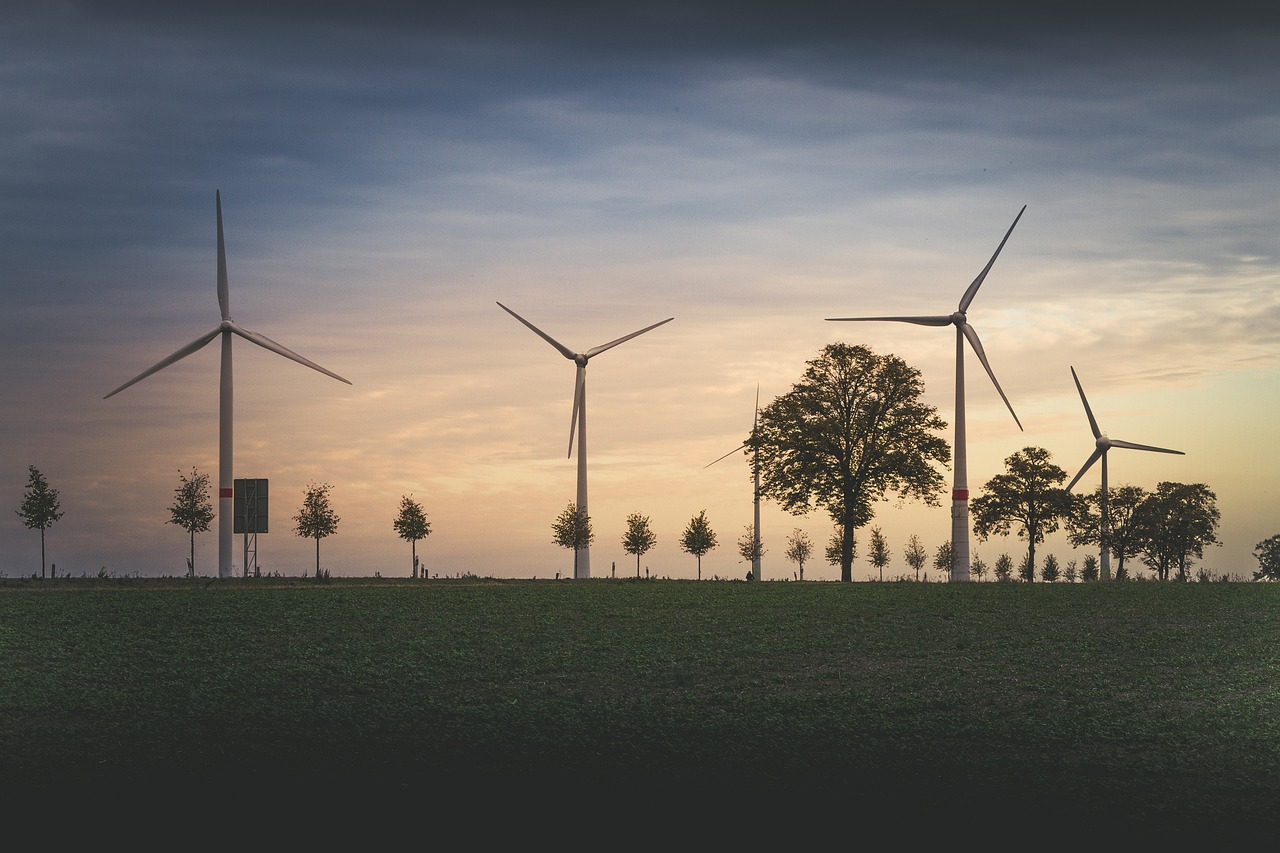
Wind Energy
When we talk about renewable energy, often flies under the radar, but it’s a powerhouse waiting to be harnessed, especially in remote areas. Imagine standing on a windswept hill, feeling the breeze whip past you, and knowing that this natural force can be transformed into electricity to power homes, schools, and businesses. Wind turbines can be installed in various locations, making them adaptable to the geographical quirks of remote regions. The beauty of wind energy lies in its potential to provide a consistent and reliable source of power, particularly in areas where other energy sources might falter.
Wind energy works by converting the kinetic energy from wind into mechanical power, which is then transformed into electricity. This process is both efficient and sustainable, making it an attractive option for communities that are off the grid. However, the success of wind energy in remote areas hinges on a few key factors:
- Site Selection: The location of wind turbines is paramount. Areas with consistent wind patterns are ideal, as they can generate electricity more reliably.
- Integration into Existing Systems: For remote areas already using diesel generators or other forms of power, integrating wind energy can reduce reliance on fossil fuels and lower energy costs.
- Community Involvement: Engaging local communities in the planning and implementation process ensures that projects meet their specific needs and gain public support.
One of the most significant advantages of wind energy is its low operational costs once the turbines are installed. Unlike fossil fuels, which require ongoing fuel purchases, wind energy harnesses a free resource—the wind! This not only leads to lower energy bills but also contributes to energy independence, which is crucial for remote areas that often rely on expensive fuel imports.
However, it's essential to address some challenges that come with wind energy implementation. For instance, the initial investment for wind turbines can be substantial. Additionally, the local acceptance of wind farms can vary; some communities may have concerns about noise or aesthetic impacts. Overcoming these hurdles typically involves thorough community engagement and education about the long-term benefits of wind energy.
In conclusion, wind energy presents a viable and sustainable solution for enhancing energy access in remote areas. By leveraging this natural resource, communities can achieve greater energy independence, reduce their carbon footprint, and create a more sustainable future. As technology advances and costs continue to decrease, the potential for wind energy in these underserved regions is more promising than ever.

Benefits of Green Energy in Remote Areas
Green energy solutions are not just a trend; they are a beacon of hope for remote areas that have long struggled with energy access. Imagine a world where every household, no matter how isolated, can flick a switch and light up their homes without relying on fossil fuels. This vision is becoming a reality through the adoption of renewable energy sources. The benefits of green energy in these underserved communities are manifold, and they go beyond just providing electricity. They encompass economic, environmental, and social improvements that can transform lives.
One of the most significant advantages of green energy is its ability to reduce carbon emissions. By harnessing the power of the sun, wind, and biomass, remote communities can significantly lower their reliance on fossil fuels, which are not only finite but also detrimental to our planet. This shift not only contributes to global efforts to combat climate change but also enhances local air quality, leading to better health outcomes for residents. Cleaner air means fewer respiratory issues, allowing families to thrive without the burden of pollution-related health problems.
Moreover, green energy fosters energy independence. For remote areas, relying on imported fuels can be both costly and unreliable. By investing in local renewable energy sources, communities can generate their own power, which not only stabilizes energy costs but also shields them from the volatility of global fuel prices. This independence can lead to a sense of empowerment, as residents take control of their energy future. Imagine a village where the sun powers homes, schools, and clinics, allowing them to operate independently of external energy suppliers.
In addition to environmental and economic benefits, green energy initiatives can also create jobs. The development, installation, and maintenance of renewable energy systems require a skilled workforce. This opens up new employment opportunities for local residents, which can stimulate the economy and improve living standards. For example, local technicians trained to install solar panels or wind turbines can ensure that the community not only benefits from clean energy but also has a stake in the technology that powers their lives.
To illustrate the impact of green energy, consider the following table, which summarizes the key benefits:
| Benefit | Description |
|---|---|
| Reduced Carbon Emissions | Lower reliance on fossil fuels leads to cleaner air and a healthier environment. |
| Energy Independence | Communities can generate their own power, stabilizing energy costs and reducing dependency. |
| Job Creation | New employment opportunities arise from the development and maintenance of renewable energy systems. |
In conclusion, the benefits of green energy in remote areas are profound and far-reaching. They not only address the immediate need for energy access but also contribute to the long-term sustainability and resilience of these communities. As we look to the future, it's clear that embracing renewable energy is not just an option; it is a necessity for creating thriving, self-sufficient, and environmentally friendly communities.
- What are the main types of green energy? The main types include solar, wind, biomass, and hydroelectric energy.
- How can remote areas benefit from green energy? They can achieve energy independence, reduce carbon emissions, and create local jobs.
- Are there challenges to implementing green energy in remote areas? Yes, challenges include financing, infrastructure needs, and local acceptance.

Economic Impact
The shift towards green energy solutions in remote areas is not just an environmental imperative; it's a powerful catalyst for economic revitalization. Imagine a community that once struggled with unreliable energy sources suddenly gaining access to affordable, sustainable power. This transition can lead to a multitude of economic benefits that ripple through the community. For starters, the establishment of green energy projects often requires local labor, which means job creation. These jobs can range from installation and maintenance of solar panels and wind turbines to roles in energy management and distribution. As these positions are filled, families gain financial stability, which in turn stimulates local economies.
Moreover, the reduction in energy costs is a game-changer. Communities that previously relied on expensive diesel generators or other fossil fuels can save a significant amount of money once they switch to renewable sources. This cost savings can be redirected into other vital areas such as education, healthcare, and infrastructure development. For instance, households can invest in better schooling for their children or improve their homes, leading to a more prosperous community overall.
To illustrate the potential economic impact, consider the following table that summarizes key benefits:
| Economic Benefit | Description |
|---|---|
| Job Creation | Local employment opportunities in installation, maintenance, and management of renewable energy systems. |
| Cost Savings | Reduction in energy expenses allows for reallocation of funds to other community needs. |
| Increased Investment | Attracting businesses and investors looking for sustainable practices and reliable energy sources. |
| Economic Diversification | Encouraging new industries and services related to renewable energy, thereby reducing dependence on traditional sectors. |
In addition to these direct benefits, green energy projects can also lead to increased investment in the community. As energy becomes more reliable, businesses are more likely to set up shop in these areas, recognizing the potential for growth. This influx of investment can create a virtuous cycle: more businesses lead to more jobs, which leads to higher spending power for residents, further attracting new businesses. It’s like a snowball effect, but in a good way!
Furthermore, the diversification of the local economy is another significant advantage. By investing in renewable energy, communities can reduce their reliance on traditional sectors like agriculture or mining, which may be vulnerable to market fluctuations. Instead, they can foster industries around energy production, technology, and sustainability, creating a more resilient economic landscape.
In conclusion, the economic impact of green energy in remote areas is profound and multifaceted. By creating jobs, reducing costs, attracting investment, and diversifying the economy, these solutions not only provide energy access but also pave the way for a brighter, more sustainable future for underserved communities.
- What are the main economic benefits of green energy in remote areas? Green energy can create jobs, reduce energy costs, attract investments, and diversify local economies.
- How does green energy reduce energy costs? By utilizing renewable sources like solar and wind, communities can avoid the high costs associated with fossil fuels.
- Can green energy projects attract new businesses? Yes, reliable energy access is a significant factor for businesses when considering where to set up operations.
- What types of jobs are created by green energy projects? Jobs can range from installation and maintenance to management and technical support roles.
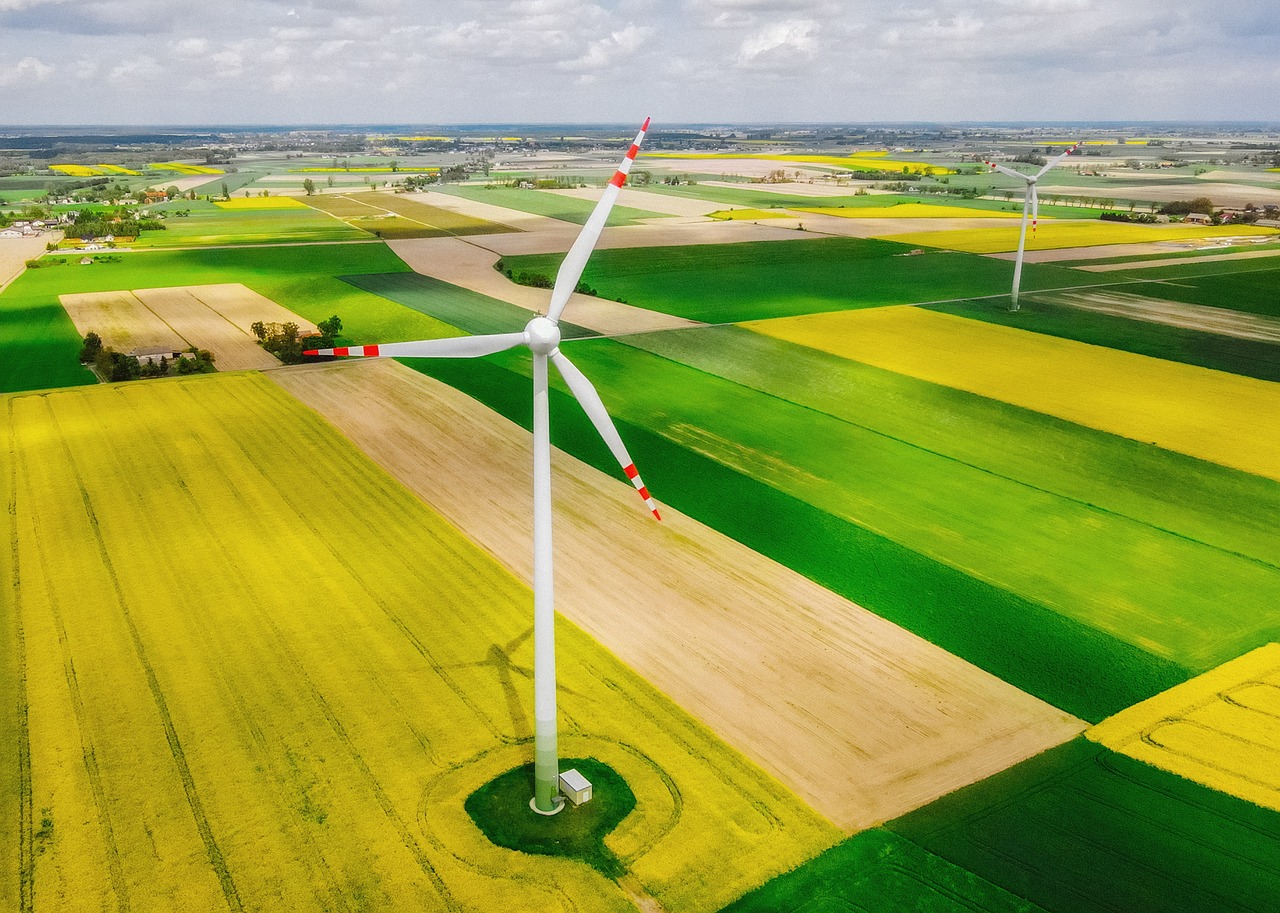
Environmental Benefits
The shift towards green energy in remote areas is not just a trend; it's a necessity for the planet's health and sustainability. By adopting renewable energy sources, these communities can significantly reduce their carbon footprint. Imagine a world where the air is cleaner, the water is purer, and the ecosystems are thriving—all because we chose to harness the power of nature instead of depleting it. The environmental benefits of green energy are multi-faceted and far-reaching.
One of the most compelling advantages is the reduction in greenhouse gas emissions. Traditional energy sources, such as coal and natural gas, release harmful pollutants into the atmosphere, contributing to climate change. In contrast, green energy sources like solar, wind, and biomass operate with minimal emissions. For instance, according to recent studies, transitioning to solar power can reduce carbon dioxide emissions by up to 90% compared to fossil fuels. This shift not only helps combat climate change but also improves air quality, leading to better health outcomes for residents in remote areas.
Additionally, green energy promotes biodiversity. By utilizing renewable resources, we can minimize habitat destruction and pollution that often accompany fossil fuel extraction. For example, wind farms, when properly sited, can coexist with local wildlife, providing energy without significant disruption to ecosystems. This harmonious relationship is crucial for maintaining the delicate balance of nature, especially in remote areas where biodiversity is often rich yet vulnerable.
Moreover, green energy fosters sustainable land use. Many renewable energy projects, such as solar farms and wind turbines, can be integrated into existing agricultural practices, allowing for dual land usage. This means farmers can continue to cultivate crops while generating clean energy, creating a synergistic effect that benefits both the economy and the environment. Imagine a farmer growing corn while simultaneously powering their home and community with solar energy—it's a win-win scenario!
To illustrate the impact of green energy on the environment, consider the following table that summarizes the key benefits:
| Environmental Benefit | Description |
|---|---|
| Reduced Emissions | Lower greenhouse gas emissions compared to fossil fuels. |
| Improved Air Quality | Less pollution leads to healthier communities. |
| Biodiversity Preservation | Renewable energy projects can coexist with wildlife. |
| Sustainable Land Use | Dual land usage for agriculture and energy production. |
In conclusion, the environmental benefits of green energy solutions in remote areas are profound. By embracing these technologies, communities not only enhance their energy independence but also contribute to a healthier planet. The transition to renewable energy is not merely an option; it is an imperative for sustainable development and ecological balance.
- What are the main types of green energy? The main types include solar, wind, biomass, hydroelectric, and geothermal energy.
- How does green energy impact local wildlife? When properly implemented, green energy projects can coexist with wildlife, helping to preserve biodiversity.
- Can green energy be cost-effective in remote areas? Yes, while initial investments may be high, long-term savings and reduced energy costs make green energy a cost-effective solution.
- What role does government policy play in promoting green energy? Supportive policies and incentives can significantly boost the adoption of green energy technologies in remote communities.
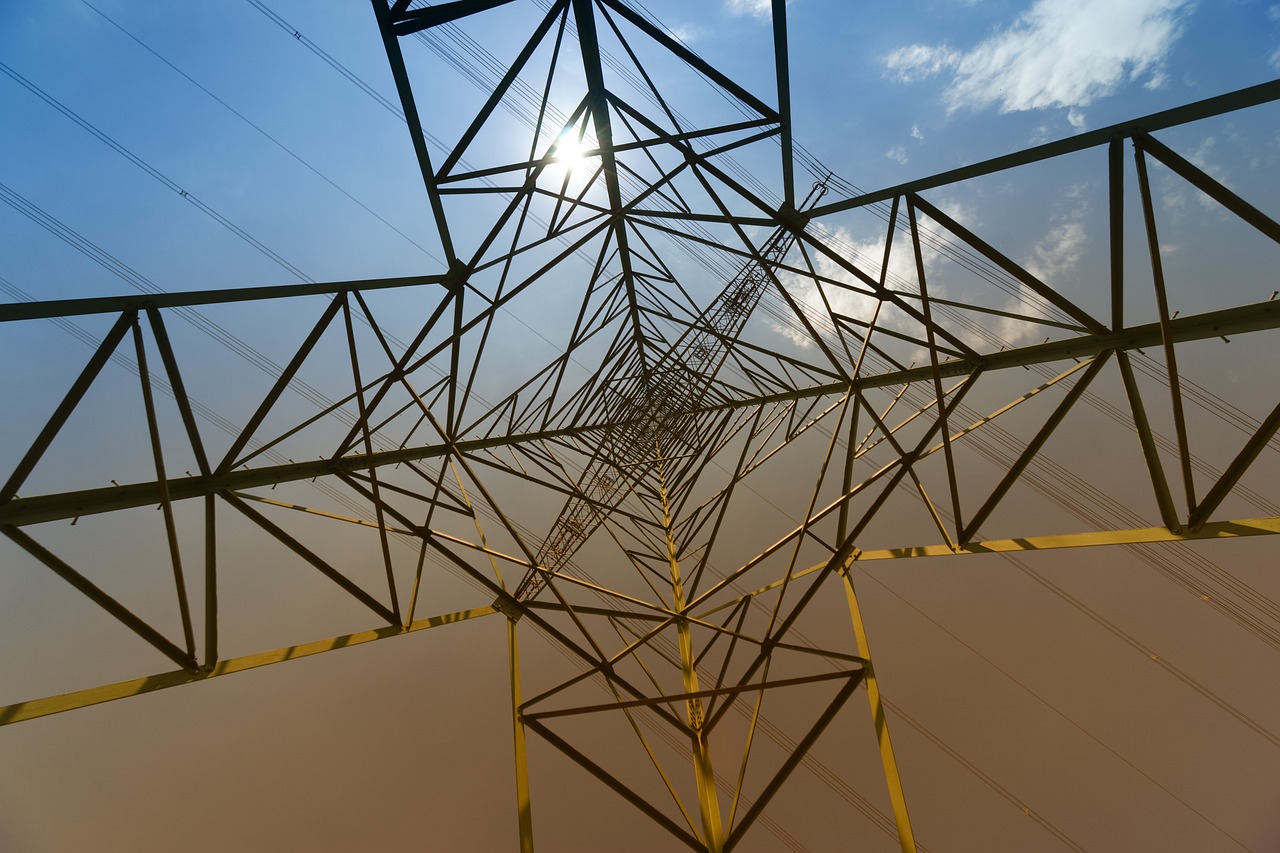
Challenges to Implementation
While the potential of green energy in remote areas is immense, several challenges hinder its widespread implementation. One of the most significant hurdles is financing. Many remote communities lack the necessary capital to invest in renewable energy projects. Traditional financial institutions often view these areas as high-risk, which can lead to a scarcity of funding options. Innovative financing models, such as community-based funding or public-private partnerships, are essential to bridge this gap. For instance, crowdfunding platforms can empower local residents to pool resources and invest in solar energy systems that benefit everyone.
Another major challenge is the infrastructure needed to support green energy technologies. Remote areas often lack the basic infrastructure required for energy generation and distribution. This includes not just physical structures, like roads and power lines, but also the technical support necessary for installation and maintenance. Without a solid infrastructure, even the best renewable energy solutions can falter. Therefore, it is crucial to develop a comprehensive plan that addresses these infrastructure needs while ensuring that the local community is involved in the process.
Local acceptance also plays a pivotal role in the successful implementation of green energy projects. In some cases, communities may be skeptical of new technologies due to a lack of understanding or previous negative experiences. Engaging with local residents and providing education about the benefits of renewable energy can help alleviate these concerns. Establishing trust and demonstrating the tangible benefits of these projects, such as job creation and reduced energy costs, is vital for gaining community support.
Lastly, regulatory frameworks can either facilitate or obstruct the implementation of green energy solutions. In many regions, outdated policies fail to accommodate innovative energy technologies, creating a barrier for new projects. Governments must work collaboratively with stakeholders to create supportive regulatory environments that encourage investment in renewable energy. This could involve simplifying permitting processes or providing incentives for early adopters.
In summary, while the transition to green energy in remote areas presents numerous challenges, addressing financing, infrastructure, local acceptance, and regulatory support can pave the way for successful implementation. By overcoming these obstacles, we can unlock the full potential of renewable energy and improve the quality of life for countless individuals in underserved communities.
- What are the main challenges in implementing green energy in remote areas?
Key challenges include financing, lack of infrastructure, local acceptance, and regulatory hurdles. - How can financing be improved for green energy projects?
Innovative financing models like community-based funding and public-private partnerships can help secure necessary capital. - Why is local acceptance important for green energy projects?
Local acceptance ensures community support, which is crucial for the success and sustainability of renewable energy initiatives. - What role do government policies play in green energy implementation?
Supportive policies can create favorable conditions for investment and streamline the process for renewable energy projects.

Financing Green Energy Projects
Securing funding for green energy projects in remote areas can often feel like trying to find a needle in a haystack. The challenges are numerous, but the potential rewards are equally significant. In many cases, traditional financing methods fall short, leaving communities in the lurch. This is where innovative financing models come into play, providing fresh avenues for investment and support.
One effective strategy is the use of community funding initiatives. These programs allow local residents to pool their resources and invest in renewable energy projects together. By fostering a sense of ownership and collaboration, these initiatives not only address financial barriers but also strengthen community bonds. For example, a small village might come together to fund a solar installation, sharing the costs and benefits equally. This model empowers individuals while simultaneously enhancing energy access.
Another promising approach is the establishment of public-private partnerships. By combining the resources and expertise of both sectors, these partnerships can create sustainable financing solutions. Governments can provide grants or low-interest loans to incentivize private companies to invest in renewable energy projects. This mutual benefit can lead to a win-win situation, where companies gain a new market while communities receive much-needed energy access.
Additionally, crowdfunding platforms have emerged as a popular option for financing green energy projects. These online platforms enable individuals to contribute small amounts of money towards larger projects, democratizing the funding process. For instance, a remote community could launch a crowdfunding campaign to raise funds for a wind turbine installation, reaching out to environmentally conscious backers worldwide. This not only helps gather the necessary funds but also raises awareness about the community’s energy needs.
Despite these innovative financing solutions, challenges remain. Many remote areas still lack the necessary infrastructure to support renewable energy projects, which can deter potential investors. Additionally, the perceived risks associated with investing in less developed regions can make financing more difficult to secure. To overcome these obstacles, it is essential to create a favorable investment climate through supportive policies and regulations. Governments must work to build trust and demonstrate the viability of green energy projects in these underserved areas.
In conclusion, financing green energy projects in remote areas is a multifaceted challenge that requires creative solutions. By leveraging community funding, public-private partnerships, and crowdfunding, these communities can unlock the doors to sustainable energy access. As more stakeholders recognize the importance of renewable energy, the path to financing these projects will become clearer, paving the way for a brighter, greener future.
- What are the main challenges in financing green energy projects? The primary challenges include high initial costs, lack of infrastructure, and perceived risks associated with investing in remote areas.
- How can communities fund their own renewable energy projects? Communities can utilize crowdfunding platforms, community funding initiatives, or seek public-private partnerships to gather necessary resources.
- What role do governments play in supporting green energy financing? Governments can provide grants, low-interest loans, and create favorable policies to encourage investment in renewable energy projects.
- Are there successful examples of community-funded green energy projects? Yes, many communities worldwide have successfully funded solar installations and wind projects through collaborative funding efforts.

Infrastructure Needs
When we talk about implementing green energy solutions in remote areas, we can’t overlook the **critical role of infrastructure**. Think of it as the backbone that supports all renewable energy initiatives. Without adequate infrastructure, even the most innovative green technology can fall short of its potential. So, what does this infrastructure entail? Well, it’s not just about having the right equipment; it also includes the necessary **transportation, communication, and distribution systems** that ensure energy can be generated, stored, and delivered efficiently.
First and foremost, let's consider **transportation infrastructure**. In remote areas, getting materials and skilled labor to the site of a renewable energy project can be a challenge. Poor roads and limited access can delay installations and increase costs. For example, if a wind farm is to be set up in a secluded location, heavy machinery and turbine components need to be transported over rugged terrain. This often requires significant investment in road improvements or even the creation of new access routes. The same goes for solar installations, where solar panels and batteries must reach their destination without damage.
Next, we have **communication infrastructure**. Reliable communication systems are essential for monitoring and managing renewable energy projects. Imagine trying to run a solar farm without the ability to communicate with the control center or receive real-time data on energy production. This can hinder maintenance efforts and reduce efficiency. Therefore, investing in robust communication networks is vital for the success of green energy initiatives.
Then there’s the **energy distribution network**. Once energy is generated, it needs to be distributed effectively to homes and businesses. In many remote areas, existing grids are either non-existent or outdated. This means that new distribution lines must be constructed to connect renewable energy sources to local consumers. It’s not just about building lines; it’s about ensuring that the energy can be stored and dispatched when needed, which often requires additional infrastructure like substations and energy storage systems.
To illustrate the importance of infrastructure in green energy projects, consider the following table that outlines the key infrastructure components necessary for successful implementation:
| Infrastructure Component | Description | Importance |
|---|---|---|
| Transportation | Roads and access routes for transporting materials and equipment. | Facilitates timely installation and reduces costs. |
| Communication | Systems for monitoring and managing energy production. | Ensures efficient operation and maintenance. |
| Energy Distribution | Grid connections and substations for delivering energy to consumers. | Enables reliable access to generated energy. |
In summary, addressing the infrastructure needs in remote areas is not just a logistical challenge; it’s a **fundamental requirement** for the success of green energy projects. By investing in transportation, communication, and energy distribution systems, we can create a robust framework that supports sustainable energy access. This not only enhances the reliability of renewable energy sources but also empowers communities to thrive economically and socially.
- What are the main barriers to developing infrastructure for green energy?
Barriers include high costs, lack of government support, and geographical challenges that make construction difficult. - How can communities overcome infrastructure challenges?
Communities can collaborate with NGOs and government agencies to secure funding and technical assistance for infrastructure development. - What role does technology play in improving infrastructure?
Innovative technologies can help optimize the design and construction of infrastructure, making it more efficient and cost-effective.

Case Studies of Successful Implementations
Examining successful green energy projects in remote areas provides valuable insights into best practices and the transformative impact of renewable energy. One of the most compelling examples is the implementation of solar microgrids in rural communities around the globe. These microgrids have proven to be a game-changer, particularly in regions where traditional energy infrastructure is either unavailable or unreliable. For instance, in Bangladesh, the Solar Home Systems (SHS) project has electrified over 4 million homes, providing power to more than 20 million people. This initiative not only improved energy access but also enhanced educational opportunities and economic activities in these areas.
Another notable case is the establishment of wind farms in isolated regions, such as the Gansu Province in China. This province has become a leader in wind energy, boasting one of the largest wind farms in the world. The Jiuquan Wind Power Base has a capacity of over 7,900 megawatts, supplying clean energy to millions while simultaneously creating jobs and stimulating local economies. The success of these wind projects illustrates how renewable energy can be effectively integrated into existing energy systems, providing a reliable power source even in the most remote locations.
To further illustrate the impact of these projects, let’s take a look at a few key metrics from successful implementations:
| Project | Location | Type of Energy | Capacity (MW) | Impact |
|---|---|---|---|---|
| Solar Home Systems | Bangladesh | Solar | N/A | 20 million people electrified |
| Jiuquan Wind Power Base | China | Wind | 7,900 | Job creation and energy supply for millions |
| Microgrid in Puerto Rico | Puerto Rico | Solar | 1.5 | Restored power post-hurricane |
These case studies highlight not just the feasibility of renewable energy solutions but also their potential to radically improve the quality of life for those living in remote areas. By providing reliable and sustainable energy sources, communities can foster economic development, enhance educational opportunities, and improve health outcomes. The success stories from Bangladesh and China serve as powerful reminders of what can be achieved when innovative technologies are combined with a commitment to sustainability.
However, it is essential to recognize that while these projects have been successful, they do not come without challenges. Local acceptance, financing, and infrastructure needs are critical factors that can influence the success of green energy initiatives. Nevertheless, the positive outcomes from these case studies offer a roadmap for future projects, emphasizing the importance of collaboration between governments, local communities, and private investors.
- What are solar microgrids? Solar microgrids are localized energy systems that can operate independently or in conjunction with the traditional grid, providing renewable energy primarily from solar panels.
- How do wind farms benefit remote areas? Wind farms generate clean energy, create jobs, and can help stabilize energy costs, making them a viable solution for energy access in remote regions.
- What challenges do green energy projects face? Common challenges include financing, infrastructure development, and gaining local community acceptance for new energy initiatives.
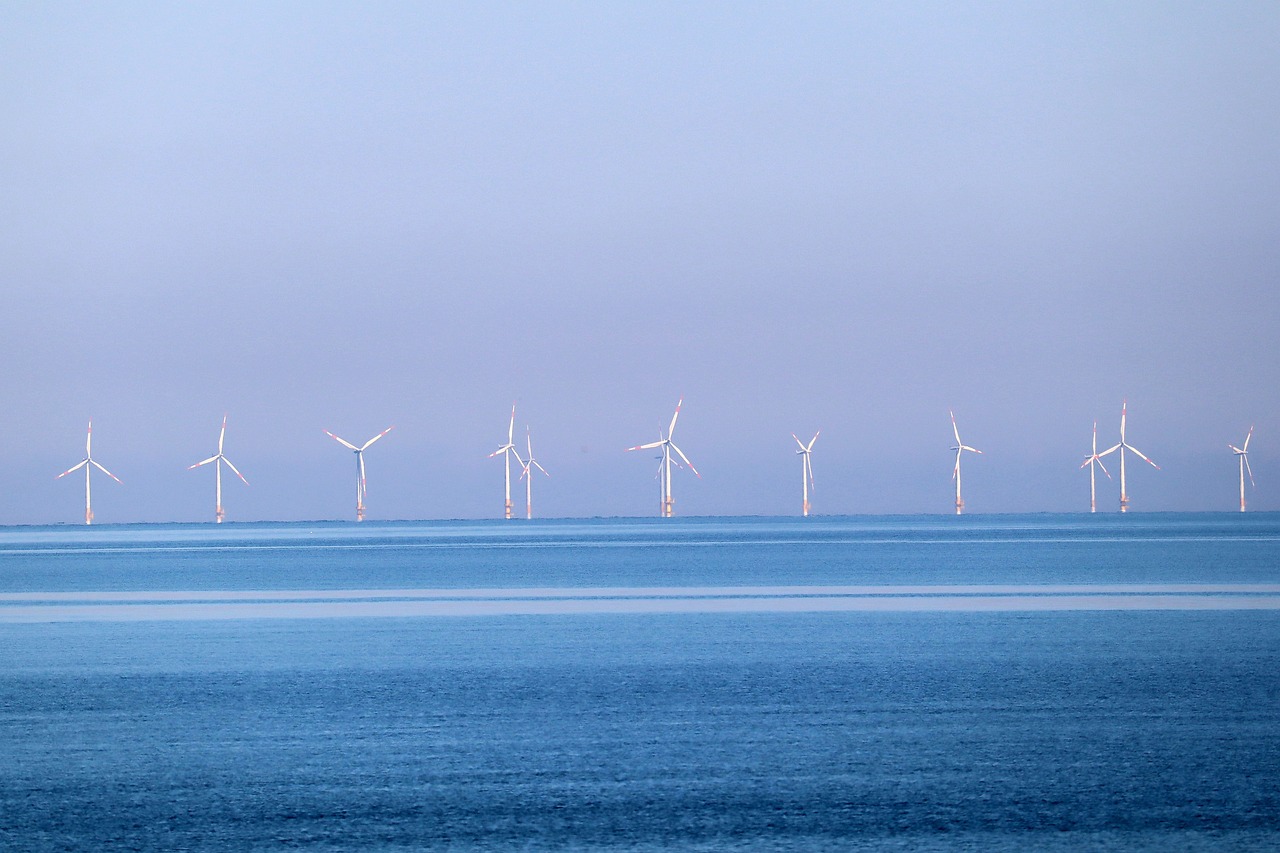
Solar Microgrids in Rural Communities
In recent years, solar microgrids have emerged as a beacon of hope for rural communities grappling with energy access issues. These small-scale energy systems, which can operate independently or in conjunction with the main grid, harness the power of solar energy to provide reliable electricity to off-grid areas. Imagine a community where the sun not only shines but also powers homes, schools, and businesses—this is the reality that solar microgrids are creating.
The beauty of solar microgrids lies in their scalability and flexibility. They can be tailored to meet the specific energy needs of a community, whether it’s a small village or a larger rural area. By integrating solar panels, battery storage systems, and smart technology, these microgrids can deliver consistent power throughout the day and night. For instance, during the day, excess energy generated can be stored in batteries for use during nighttime or cloudy days, ensuring that the lights stay on even when the sun isn't shining.
One of the most compelling aspects of solar microgrids is their ability to foster community engagement and empowerment. When a community invests in its own energy system, it cultivates a sense of ownership and responsibility among its members. This communal approach not only enhances energy access but also encourages local job creation in the installation and maintenance of solar technologies. In many cases, residents are trained to manage these systems, gaining valuable skills that can lead to further economic opportunities.
Let's take a look at some successful examples of solar microgrids in rural communities:
| Location | Project Description | Impact |
|---|---|---|
| Bangladesh | Solar Home Systems | Over 4 million solar home systems installed, providing electricity to 20 million people. |
| Kenya | Mini-grid Projects | Community-managed solar mini-grids powering schools, clinics, and businesses. |
| India | Solar Microgrid Initiatives | Empowered rural communities with reliable energy access, enhancing education and health services. |
However, it’s important to acknowledge that while solar microgrids offer numerous benefits, they also face challenges. Initial costs for installation and technology can be a barrier for many communities. Moreover, the sustainability of these projects often depends on ongoing maintenance and community involvement. To mitigate these challenges, partnerships with NGOs and government support can play a crucial role in financing and training.
In conclusion, solar microgrids represent a transformative solution for energy access in rural communities. By harnessing the power of the sun, these systems not only provide electricity but also promote economic development, environmental sustainability, and community resilience. As we look to the future, the potential for solar microgrids to revolutionize energy access in remote areas is not just a dream—it's becoming a reality.
- What is a solar microgrid? A solar microgrid is a localized energy system that can generate and distribute electricity independently or in conjunction with the main power grid, primarily using solar energy.
- How do solar microgrids benefit rural communities? They provide reliable electricity, promote local job creation, enhance community engagement, and reduce reliance on fossil fuels.
- What are the challenges associated with solar microgrids? Initial installation costs, maintenance requirements, and the need for community involvement can pose challenges to the successful implementation of solar microgrids.
- Are there successful examples of solar microgrids? Yes, countries like Bangladesh, Kenya, and India have implemented successful solar microgrid projects that have significantly improved energy access for rural communities.
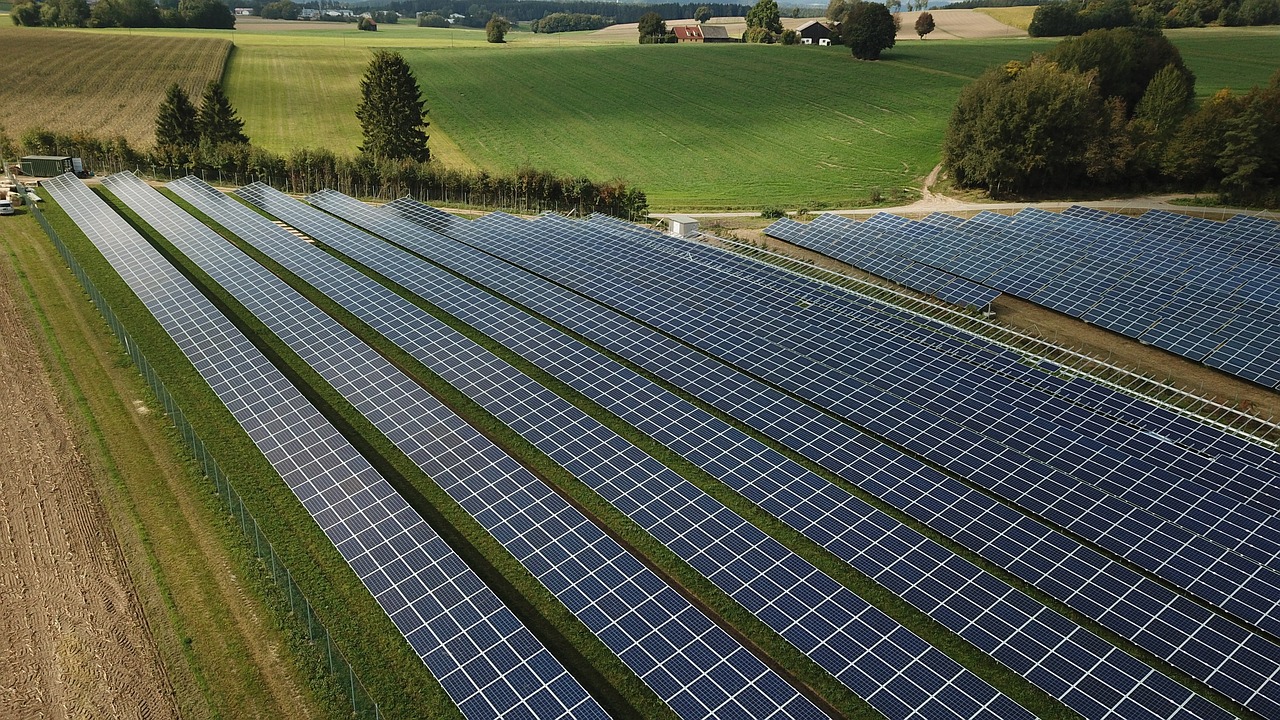
Wind Farms in Isolated Regions
Wind energy has emerged as a powerful ally in the quest for sustainable energy access, especially in isolated regions where traditional energy sources are often scarce or unreliable. The implementation of wind farms in these remote areas not only provides a renewable source of energy but also fosters economic growth and enhances the quality of life for local communities. Imagine a small village nestled in the mountains, where residents rely on expensive and polluting diesel generators. Now, picture those same villagers harnessing the power of the wind to light up their homes, schools, and businesses. This transformation is not just a dream; it is becoming a reality in many parts of the world.
One notable example is the establishment of wind farms in the remote areas of Scotland. Here, the rugged landscape is perfectly suited for wind energy generation. Local communities have witnessed a significant reduction in energy costs, and the income generated from these wind farms has been reinvested into local infrastructure, education, and healthcare. The benefits are clear: by utilizing the abundant wind resources, these isolated regions are not only achieving energy independence but also creating a sustainable future.
However, the development of wind farms in isolated regions comes with its own set of challenges. Factors such as site selection, environmental impact assessments, and community acceptance play a crucial role in the successful implementation of these projects. For instance, when considering a location for a wind farm, developers must evaluate wind patterns, proximity to existing power grids, and potential effects on local wildlife. Engaging with the community early in the planning process can help address concerns and build support for the project.
Moreover, the integration of wind energy into existing energy systems is essential for maximizing its potential. In many cases, combining wind farms with other renewable sources, such as solar energy, can provide a more stable and reliable energy supply. This hybrid approach not only mitigates the intermittent nature of wind energy but also enhances overall energy security for isolated regions.
In conclusion, wind farms represent a viable and sustainable solution for energy access in isolated regions. By tapping into the natural resources available in these areas, communities can achieve energy independence, stimulate economic growth, and improve their overall quality of life. As we look to the future, it is vital to continue exploring innovative ways to harness wind energy while addressing the challenges that come with it.
- What are the main benefits of wind energy in remote areas? Wind energy provides a renewable, low-cost source of electricity, reduces reliance on fossil fuels, and can stimulate local economies through job creation.
- How do wind farms impact local wildlife? Wind farms can affect local wildlife, particularly birds and bats. However, careful site selection and environmental assessments can minimize these impacts.
- Can wind energy be combined with other renewable sources? Yes, combining wind energy with solar power or biomass can create a more stable and reliable energy supply, especially in areas with variable weather conditions.
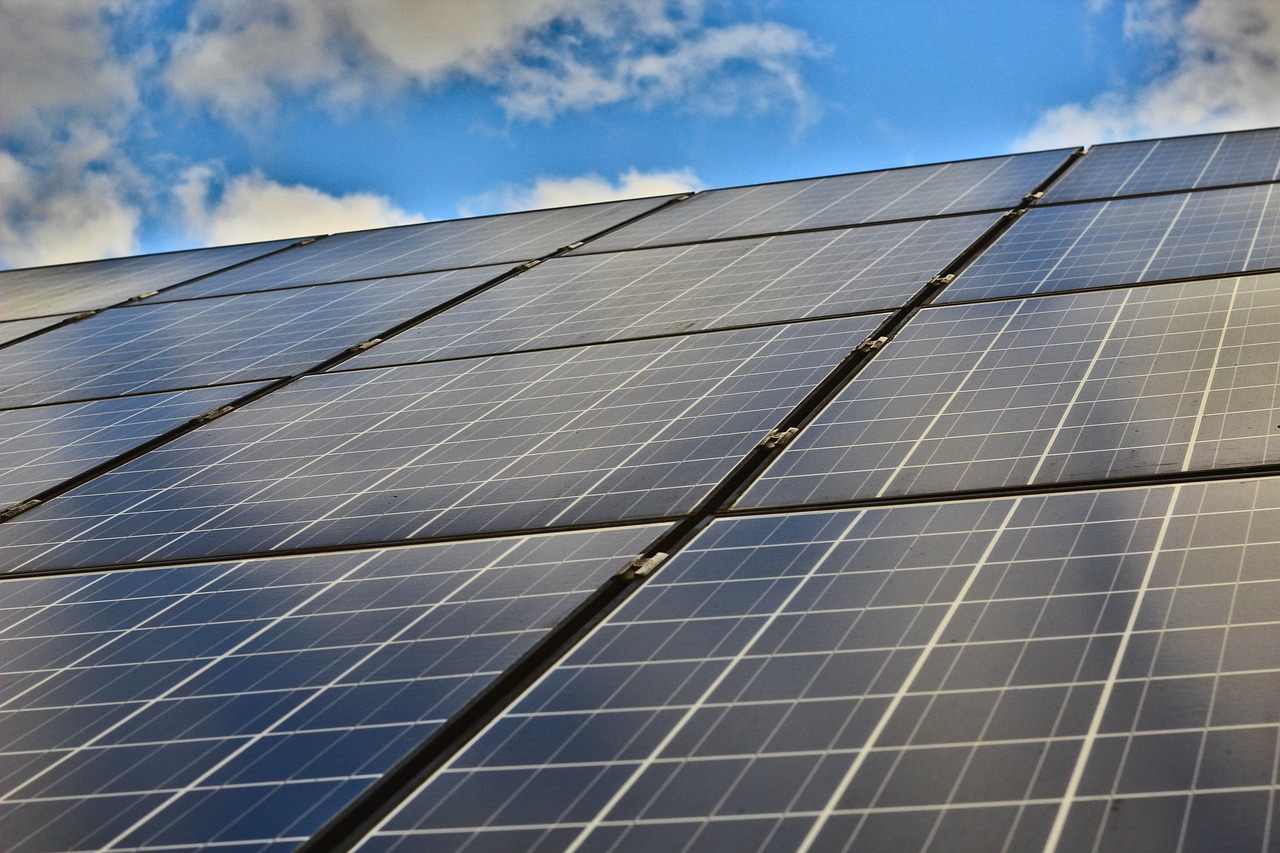
The Future of Green Energy in Remote Areas
The future of green energy in remote areas is not just a distant dream; it’s rapidly becoming a reality. With advancements in technology and a growing recognition of the importance of sustainable energy solutions, remote communities are on the brink of a transformation. Imagine a world where every remote village, no matter how isolated, has access to clean, renewable energy. This is not just wishful thinking; it's an achievable goal driven by innovation and collaboration.
One of the key factors shaping this future is the **advancement in energy storage technologies**. As we know, renewable energy sources like solar and wind are intermittent. However, new energy storage solutions, such as advanced batteries and other innovative systems, are being developed to store excess energy produced during peak generation times. This stored energy can then be used during periods of low production, ensuring a consistent and reliable power supply. For instance, lithium-ion batteries and emerging technologies like flow batteries are becoming more affordable and efficient, making them ideal for remote applications.
Moreover, supportive policies and regulations are crucial for promoting the adoption of green energy in these areas. Governments at various levels are beginning to recognize the potential of renewable energy to not only provide power but also to drive economic growth. By implementing favorable policies, such as tax incentives, grants, and subsidies for renewable energy projects, they can create an environment that encourages investment and innovation. This, in turn, can lead to the establishment of more green energy projects in remote regions, creating jobs and stimulating local economies.
Furthermore, community involvement and local acceptance are vital for the successful implementation of green energy projects. Engaging local residents in the planning and decision-making processes ensures that the solutions implemented meet their specific needs and concerns. When communities feel invested in the projects, they are more likely to support and maintain them. This collaborative approach not only enhances the effectiveness of the energy solutions but also fosters a sense of ownership among the residents.
As we look ahead, we can expect to see a variety of innovative projects emerging in remote areas. For example, hybrid systems that combine solar, wind, and energy storage technologies are becoming increasingly popular. These systems can provide a more stable energy supply by leveraging the strengths of each technology. Additionally, microgrid systems that allow communities to generate and manage their own energy are gaining traction, providing a level of energy independence that was previously unattainable.
In conclusion, the future of green energy in remote areas is bright and filled with potential. With continued advancements in technology, supportive policies, and active community engagement, we can look forward to a world where clean, renewable energy is accessible to all, regardless of their geographical location. The journey may have its challenges, but the rewards—improved quality of life, economic growth, and a healthier planet—are well worth the effort.
- What is green energy? Green energy refers to energy derived from renewable, environmentally-friendly sources such as solar, wind, and biomass.
- How can green energy benefit remote areas? Green energy can provide reliable electricity, reduce energy costs, and promote economic development in remote communities.
- What are the challenges of implementing green energy in remote areas? Challenges include high initial costs, lack of infrastructure, and need for local acceptance.
- What role does government policy play in green energy adoption? Supportive policies can incentivize investment, reduce financial barriers, and promote renewable energy projects.
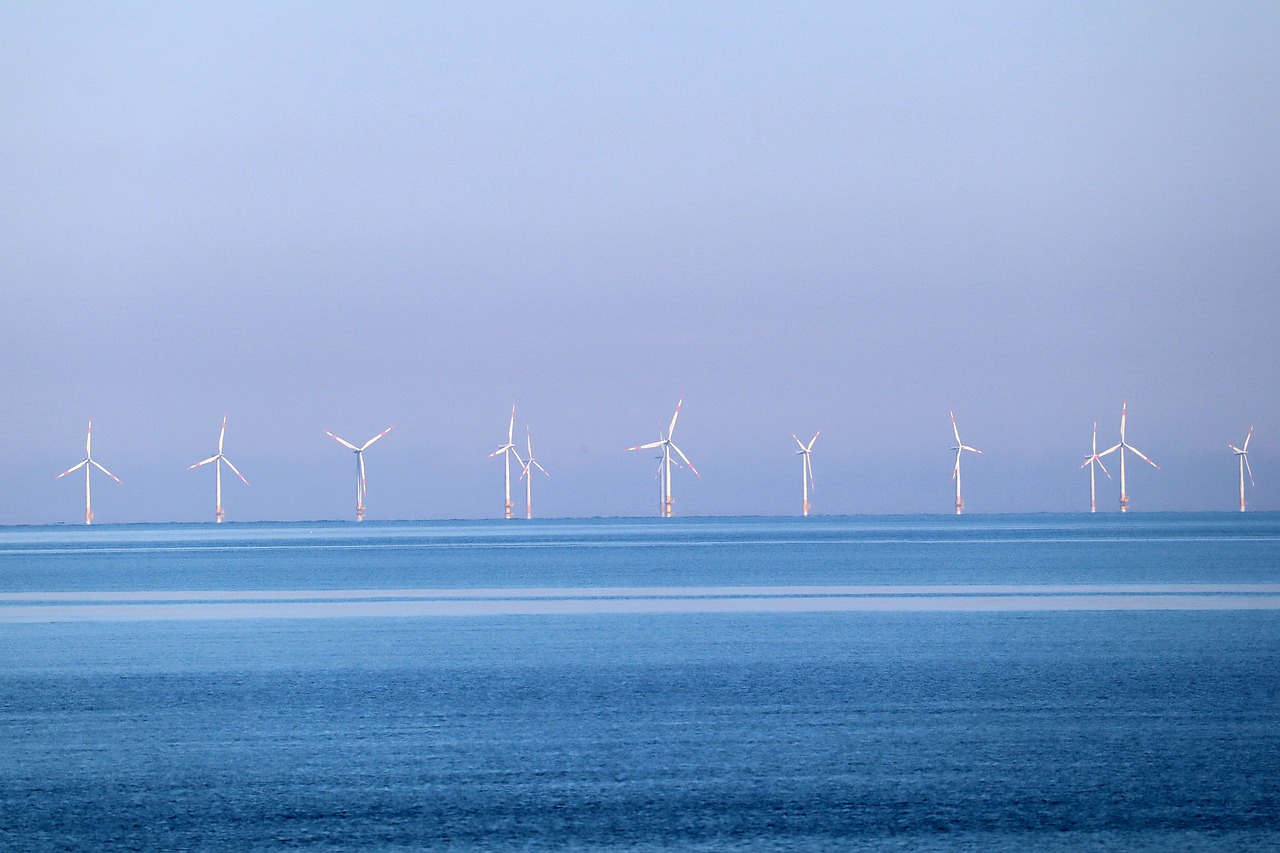
Innovations in Energy Storage
As we delve into the realm of green energy, one critical aspect that often gets overshadowed is energy storage. Innovations in this field are not just enhancing the efficiency of renewable energy sources; they are also transforming the way we think about energy access, especially in remote areas. Imagine living in a place where the sun shines bright all day, yet you can’t harness that energy when the sun goes down. This is where energy storage comes into play, acting as a bridge between energy generation and consumption.
Recent advancements in energy storage technologies have led to the development of more efficient, cost-effective, and sustainable solutions. For instance, lithium-ion batteries have become the gold standard for energy storage, thanks to their high energy density and decreasing costs. However, the innovation doesn’t stop there. New technologies, such as flow batteries and solid-state batteries, are emerging as game-changers. Flow batteries, for example, offer scalability and longer lifespans, making them ideal for large-scale applications in remote communities.
Moreover, researchers are exploring grid-scale energy storage systems that can store excess energy generated from renewable sources and release it during peak demand. This not only stabilizes the grid but also ensures that remote areas have a reliable energy supply, regardless of weather conditions. For instance, a recent project in a remote village utilized a combination of solar panels and a flow battery system, which allowed the community to store energy during sunny days and use it during the night or cloudy days.
Another exciting innovation is the development of hydrogen storage systems. By using excess renewable energy to produce hydrogen through electrolysis, communities can store energy in a form that can be easily transported and converted back into electricity when needed. This method not only enhances energy access but also provides a sustainable solution to energy storage challenges.
To put these innovations into perspective, consider the following table that outlines different energy storage technologies and their benefits:
| Technology | Benefits |
|---|---|
| Lithium-ion Batteries | High energy density, declining costs, widely adopted |
| Flow Batteries | Scalability, long lifespan, suitable for large-scale applications |
| Solid-state Batteries | Higher safety, improved efficiency, longer life cycles |
| Hydrogen Storage | Transportable energy, versatile applications, renewable integration |
As we look to the future, the integration of these innovative storage solutions will be crucial in expanding energy access in remote areas. The potential to harness renewable energy effectively, store it, and utilize it when needed can dramatically change the landscape for communities that have long been underserved. By investing in these technologies, we are not just addressing energy access; we are paving the way for sustainable development, economic growth, and improved quality of life in remote regions.
- What is energy storage and why is it important? Energy storage refers to capturing and holding energy for use at a later time. It is crucial for balancing supply and demand, particularly in renewable energy systems where generation can be intermittent.
- How do lithium-ion batteries work? Lithium-ion batteries store energy through electrochemical reactions, allowing for efficient energy release and recharge cycles, making them popular for a variety of applications.
- What are flow batteries? Flow batteries are a type of rechargeable battery where energy is stored in liquid electrolytes, allowing for scalable and longer-duration energy storage solutions.
- Can hydrogen be used for energy storage? Yes, hydrogen can be produced using excess renewable energy and stored for later use, either in fuel cells or converted back into electricity, making it a versatile energy carrier.
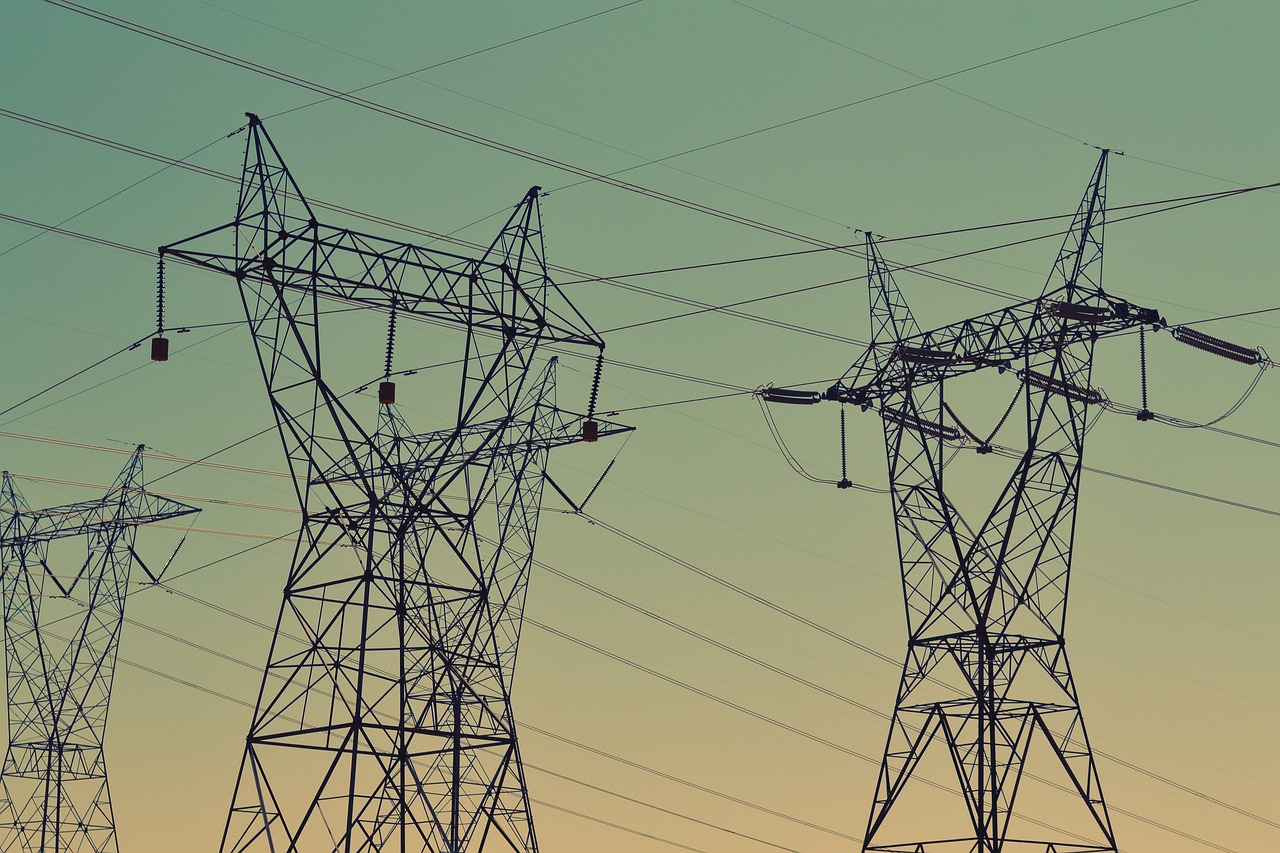
Policy and Regulatory Support
In the realm of green energy, are crucial for fostering an environment where renewable energy projects can thrive, especially in remote areas. Governments play a pivotal role in setting the stage for these initiatives through legislation, incentives, and partnerships. Without a supportive framework, even the most innovative energy solutions can struggle to gain traction.
One of the most effective ways to encourage the adoption of green energy is through financial incentives. These can come in various forms, such as tax credits, grants, and subsidies, which help to offset the initial costs associated with renewable energy projects. For instance, a government might offer a tax rebate for households that install solar panels, making it more affordable for families in remote regions to access clean energy. Furthermore, establishing feed-in tariffs can guarantee a fixed payment for energy generated from renewable sources, providing a stable income for local producers.
Additionally, streamlined permitting processes can significantly reduce the time and complexity involved in launching green energy projects. By simplifying these procedures, governments can encourage more entrepreneurs and communities to invest in renewable energy solutions. A transparent and efficient regulatory framework not only saves time but also builds trust among stakeholders, fostering a collaborative environment for innovation.
Moreover, governments can establish public-private partnerships to leverage both public resources and private sector expertise. These collaborations can lead to the development of large-scale renewable energy projects that might be too risky or expensive for individual entities to undertake alone. For example, a local government could partner with a renewable energy company to build a wind farm, sharing the risks and rewards while ensuring that the community benefits from increased energy access.
However, it's essential to recognize that the effectiveness of these policies often hinges on local contexts. What works in one region may not be applicable in another due to varying economic, social, and environmental factors. Therefore, a one-size-fits-all approach may not be effective. Policymakers must engage with local communities to understand their unique challenges and tailor solutions accordingly.
In conclusion, robust policy and regulatory support are fundamental to advancing green energy solutions in remote areas. By providing financial incentives, simplifying regulations, and fostering public-private partnerships, governments can create a conducive environment for renewable energy projects. This, in turn, can lead to enhanced energy access, economic development, and environmental benefits for underserved communities.
- What are the main benefits of green energy? Green energy reduces carbon emissions, promotes energy independence, and can create jobs in local communities.
- How can governments support green energy initiatives? Governments can provide financial incentives, streamline permitting processes, and foster public-private partnerships to encourage renewable energy projects.
- What challenges do remote areas face in adopting green energy? Challenges include high initial costs, lack of infrastructure, and the need for local acceptance of new technologies.
- Are there successful examples of green energy projects in remote areas? Yes, numerous case studies exist, including solar microgrids and wind farms that have successfully improved energy access in isolated regions.
Frequently Asked Questions
- What is green energy?
Green energy refers to energy produced from renewable, sustainable sources that have a minimal impact on the environment. This includes solar, wind, hydro, and biomass energy. These sources are crucial for reducing our carbon footprint and combating climate change.
- How can green energy improve energy access in remote areas?
Green energy can significantly improve energy access in remote areas by providing sustainable and reliable power solutions. Technologies like solar panels and wind turbines can be deployed in off-grid locations, offering communities the energy they need for basic services, education, and economic development.
- What are the main types of green energy solutions available?
The main types of green energy solutions include solar energy, wind energy, and biomass. Each has its unique benefits and can be tailored to meet the specific energy needs of remote communities. For instance, solar energy is highly scalable and cost-effective, making it ideal for rural settings.
- What challenges do remote areas face in implementing green energy?
Remote areas face several challenges when implementing green energy solutions, such as high initial costs, lack of infrastructure, and difficulties in securing financing. Additionally, local acceptance and understanding of these technologies can also pose hurdles that need to be addressed for successful implementation.
- Can you give examples of successful green energy projects in remote areas?
Yes! There are numerous successful green energy projects in remote areas, such as solar microgrids in rural communities that provide reliable electricity, and wind farms in isolated regions that harness natural resources effectively. These projects not only provide energy but also stimulate local economies and improve quality of life.
- What role do policies play in promoting green energy adoption?
Supportive policies and regulations are essential for promoting green energy adoption. They can create favorable environments for investment, streamline the permitting process, and provide financial incentives that encourage the development of renewable energy projects in remote communities.
- How does green energy contribute to environmental sustainability?
Green energy contributes to environmental sustainability by reducing reliance on fossil fuels, which are major contributors to greenhouse gas emissions. By adopting renewable energy sources, communities can lower their carbon footprints, protect natural ecosystems, and promote cleaner air and water.
- What innovations are emerging in energy storage for green energy?
Emerging innovations in energy storage, such as advanced battery technologies and grid-scale storage solutions, are crucial for enhancing the reliability of green energy. These innovations allow for better management of energy supply and demand, ensuring that remote areas have access to power even when renewable sources are not actively generating electricity.



















